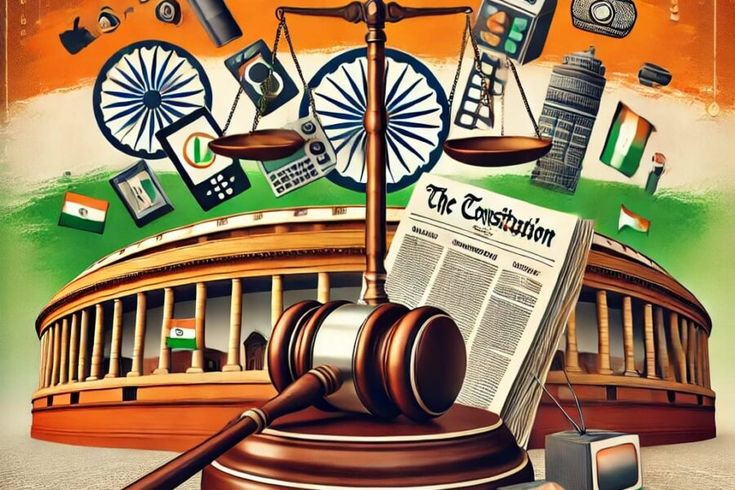Supreme Court as the Apex Judicial Authority
The Supreme Court of India, established under Article 124 of the Constitution, is the highest judicial authority in the country. Its role extends beyond merely adjudicating disputes—it is a guardian of the Constitution, protector of fundamental rights, and arbiter in matters affecting the Union and States. To achieve these objectives, the Supreme Court exercises multiple types of jurisdictions, each designed to address specific constitutional, legal, and public needs.
The framers of the Constitution intended for the Supreme Court to function as an apex court with comprehensive powers, ensuring justice, interpreting laws, and maintaining constitutional supremacy. Understanding the various jurisdictions is essential for law students, legal professionals, and citizens interested in constitutional governance.
Original Jurisdiction
Original jurisdiction refers to the Supreme Court’s authority to hear cases first-hand, rather than on appeal, as specified in Article 131. This jurisdiction primarily involves disputes between:
- The Union and States
- Two or more States
Under Article 131, such disputes often involve questions of law or fact relating to the distribution of powers, territories, or resources. For example, water disputes between states, such as the Cauvery Water Dispute, have been adjudicated under this jurisdiction.
Original jurisdiction ensures that inter-state conflicts are resolved at the highest judicial level, maintaining federal harmony. Importantly, the Supreme Court also exercises original jurisdiction in cases involving enforcement of fundamental rights under Article 32, allowing citizens to directly approach the apex court when their rights are violated.
Appellate Jurisdiction
The appellate jurisdiction of the Supreme Court is its power to hear appeals against lower courts and tribunals, primarily the High Courts, as provided under Articles 132, 133, and 134. This jurisdiction ensures uniformity in the interpretation of law and prevents conflicting judgments across states.
- Civil Appeals (Article 133): Appeals arise from High Court decisions in civil matters exceeding a specified monetary limit.
- Criminal Appeals (Article 134): Appeals arise from High Court convictions in criminal cases, especially those involving severe penalties like death sentences.
- Appeals involving Fundamental Rights (Article 132): These cases ensure that constitutional rights are uniformly protected across India.
Appellate jurisdiction strengthens the rule of law by providing a higher forum for redressal and ensures that justice is not confined by territorial boundaries.
Advisory Jurisdiction
The Supreme Court exercises advisory jurisdiction under Article 143, allowing the President of India to seek the Court’s advice on legal questions of public importance. Key aspects of this jurisdiction include:
- It is consultative, not compulsory; the President seeks guidance, and the Court provides a non-binding opinion.
- Advisory jurisdiction often involves constitutional interpretation, treaties, or complex legal matters affecting the nation.
- For example, the Supreme Court was consulted on the disqualification of MPs under the anti-defection law and on certain taxation disputes.
This jurisdiction underscores the Supreme Court’s role as a constitutional advisor, ensuring that the executive receives authoritative legal guidance while maintaining judicial neutrality.
Writ Jurisdiction
The Supreme Court’s writ jurisdiction, provided under Article 32, empowers it to enforce fundamental rights guaranteed by the Constitution. Citizens can directly approach the Supreme Court to seek relief using writs such as:
- Habeas Corpus – Protects individual liberty and safeguards against illegal detention.
- Mandamus – Commands a public authority to perform its duty.
- Prohibition – Prevents lower courts or authorities from exceeding their jurisdiction.
- Certiorari – Quashes illegal orders or decisions of lower authorities.
- Quo Warranto – Challenges the legality of holding public office.
Article 32, described by Dr. B.R. Ambedkar as the “heart and soul of the Constitution”, makes the Supreme Court the guardian of citizens’ rights. Its writ jurisdiction is a powerful tool to uphold constitutional morality and prevent abuse of authority.
Extraordinary Jurisdiction and Public Interest Litigation
Beyond statutory provisions, the Supreme Court has developed extraordinary jurisdiction through Public Interest Litigation (PIL). This jurisdiction allows courts to act even when traditional standing rules are not met, provided there is a public interest involved.
- PIL enables citizens to approach the court indirectly through social activists or NGOs in cases affecting marginalized groups, environmental issues, or governance failures.
- Notable examples include MC Mehta cases on environmental protection and PUCL cases on prisoners’ rights.
This jurisdiction exemplifies the Supreme Court’s evolving role as a proactive guardian of constitutional values, reflecting its flexibility in protecting public interest.
Real-Time Example
A practical instance of the Supreme Court exercising its jurisdiction is the Kaveri River Water Dispute (original jurisdiction). The Supreme Court adjudicated the conflict between Karnataka and Tamil Nadu, ensuring equitable water distribution.
Similarly, in Vishakha v. State of Rajasthan (PIL jurisdiction), the Court framed guidelines against sexual harassment at the workplace, demonstrating the writ and PIL jurisdiction.
Another example is the advisory jurisdiction exercised when the President sought legal clarity on the Constitutionality of GST-related amendments, highlighting the Court’s consultative role.
Limitations and Safeguards
While the Supreme Court’s jurisdictions are vast, they are not absolute:
- Original jurisdiction under Article 131 excludes disputes involving the central government and private parties.
- Advisory opinions are non-binding, and the Court cannot enforce them.
- PIL cases require genuine public interest, and frivolous petitions can be dismissed.
Judicial review and constitutional conventions ensure that the Supreme Court exercises its powers judiciously, maintaining balance between judicial activism and restraint.
Mnemonic to Remember – “OAW-PIL”
To easily remember the different types of jurisdictions exercised by the Supreme Court, use the mnemonic “OAW-PIL”:
- O – Original Jurisdiction (Article 131 & Article 32)
- A – Appellate Jurisdiction (Articles 132–134)
- W – Writ Jurisdiction (Article 32)
- P – PIL (Public Interest Litigation, Judicial Activism)
- I – Advisory Jurisdiction (Article 143)
- L – Limitations and Safeguards (Judicial checks)
This mnemonic helps recall the scope, purpose, and limitations of the Supreme Court’s jurisdictions in a structured way.
Mnemonic Recap:
OAW-PIL → Original, Appellate, Writ, Public Interest Litigation, Advisory, Limitations
About lawgnan:
Explore the Jurisdiction of the Supreme Court of India in detail at Lawgnan.in. Understand how the Supreme Court functions as the guardian of the Constitution, exercising original, appellate, advisory, and writ jurisdictions under Articles 124–143. Learn how it protects fundamental rights, resolves Union-State disputes, and upholds constitutional supremacy through landmark cases like Vishakha and Cauvery Water Dispute. Perfect for law students, UPSC aspirants, and judiciary candidates, this article simplifies complex concepts with the OAW-PIL mnemonic for easy recall. Visit Lawgnan today to master India’s judicial powers and constitutional governance.




